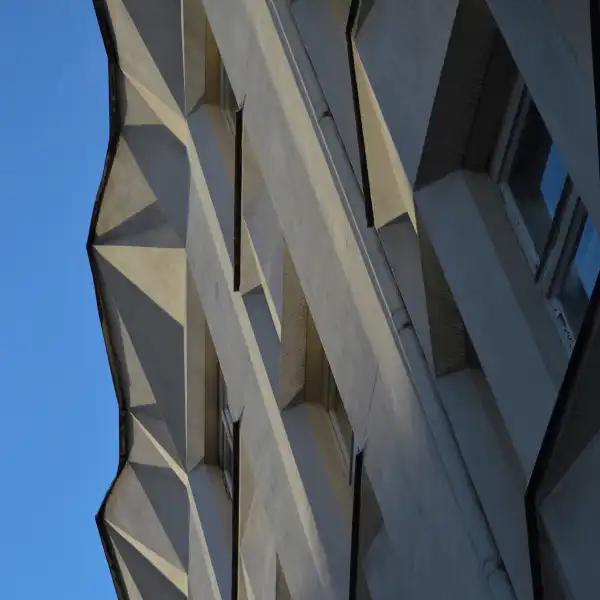Passage Route
Shortcut to architecture
They are a convenient shortcut as well as an interconnected labyrinth that allows you to disappear into hidden gardens and courtyards. They weave through the entire center of our capital city and are immensely practical. The Prague arcades began to emerge in the 1920s and became a significant and unique phenomenon, which in a sense they still are today. Sometimes, in our everyday rush, we pass through them without paying too much attention. Yet, they are an incredibly interesting world that is worth exploring. Along the route, we will show you not only the most famous arcades but also the more mysterious passages. Are you ready to embark on a journey?

Duration:
22 minut
Number of stops:
8
Lenght:
1,8 km
MHD start:
Václavské náměstí
MHD end:
Staroměstská
Světozor Passage
Ligna palace, built during the First World War in the style of fading Art Nouveau and emerging modernism, was designed by Osvald Polívka and Josef Sakař. However, the arcade itself was not created until after the Second World War, based on the design by the Fišer brothers. In 1949, František Hudeček created the famous advertisement for the Tesla company, which dominates the entire space and showcases the elegance of advertising at that time. The entire arcade is complemented by period details such as a glass vault, railings, and shop windows that were adorned with neon signs until recently. Unfortunately, today the arcade is filled with numerous colorful advertising banners.

TeTa Passage
One of the hidden entrances to Františkánská garden is the TeTa Arcade, an inconspicuous passage in a six-story building with the street number 28. It is a part of a functionalist structure from 1933 designed by architects Ernst Mühlstein and Viktor Fürth, which many Prague residents know as the Dům sportu (House of Sport), as it originally housed a sports equipment store. In the 1990s, the building underwent reconstruction, which also affected the appearance of the mentioned arcade. It impresses with its airiness and tastefully incorporated signage for the shops. Today, the building no longer serves its original purpose and is mainly occupied by offices and apartments. However, the shops have not disappeared completely and have found their place in the ground-floor arcade.

Adria Passage
The Rondocubist Adria Palace, designed by architects Josef Zasche and Pavel Janák, has stood at the beginning of Národní třída for almost 100 years. It was originally built as the headquarters of an Italian insurance company and stands out with its facade modeling and artistic elements, such as semi-circular or triangular cornices, towers with battlements, and sculptures by Jan Štursa and Bohumil Kafka. While Štursa’s sculpture “Adria” or “Seafaring” is located on the palace’s facade, Bohumil Kafka’s sculptural decoration, complementing the local clock, can be seen inside the building. The arcade is also enhanced by a mosaic floor depicting events for which one should have insurance. That was marketing back then!

Platýz Passage
The history of this tranquil place in the center of Prague, which connects Národní Street and Uhelný trh (Coal Market), dates back to the Gothic era. After the demolition of the original houses in the mid-14th century, a palace resembling a castle was built here, which underwent numerous modifications over time. One of these modifications was carried out in the Renaissance style, at the behest of the new owner, Jan Platais of Plattenštejn, after whom the palace and its arcade are still named. In the 17th century, the palace underwent a Baroque renovation, and in 1847, the final reconstruction in the spirit of Classicism was completed, which is still visible today. The buildings adjacent to the palace were connected, and the complex became the first historical apartment building in Prague. The resulting courtyard is now a commercial arcade with restaurants, a café, and the renowned stationery store Zlatá loď (Golden Ship).

Golden Lane
Zlatá ulice (Golden Lane) got its name from the craftsmen who lived there in the Middle Ages. This narrow alley in the Old Town was home to jewelers and goldsmiths, but it officially received its name much later, in 1905. The narrow lane, partially overgrown with ivy, leads from Anenské náměstí (Anenské Square) to the front of the Church of St. Giles and is filled with the enchanting atmosphere of old Prague. It is formed by the rear facades of the local houses and the Church of St. Anne. As one of the few streets in the Old Town, it is locked at night.

Kepler’s Passage
The name of the famous German astrologer is not only carried by the prestigious gymnasium in Hradčany but also by a passage connecting Karlova Street and Anenské náměstí (Anenské Square). The House U Francouzské koruny (At the French Crown), through which the passage leads, was built in the Gothic era, and its newest extension (on the side of Anenské náměstí) dates back to the time of Classicism. Johannes Kepler lived in this house from 1607 to 1612, as evidenced by the commemorative plaque on the facade facing Karlova Street. The local fountain depicting an armillary sphere, a historical astronomical instrument, also pays tribute to his work.

Klementinum
The entire complex of Klementinum is interwoven with a system of passages. The former Jesuit college stands on the site of the former Dominican monastery and is the largest architectural complex in the cadastral area of Staré Město (Old Town). Since its founding in 1557, it has undergone numerous architectural modifications by various architects and artists, with probably the greatest contribution attributed to Carlo Lurago as the author of the early Baroque Church of the Most Holy Saviour. Klementinum has always been a place of education and has served as a backdrop for many giants of Czech culture. Within its walls, Bohuslav Balbín, Josef Kajetán Tyl, and Jan Neruda, among others, made their mark. Today, the complex houses the National Library of the Czech Republic, and some of its spaces are partially accessible to the public.

V Cípu Passage
The passage called V Cípu, named after the local restaurant, is a convenient route free from tourist crowds. It leads from the bustling Jilská Street to Malé náměstí (Small Square) or Melantrichova Street. There stands the deconsecrated Church of St. Michael the Archangel, which has been there since Romanesque times. It has undergone many reconstructions and reached its greatest significance in the early 15th century when it briefly became a center of Hussitism due to the worship services of Jan Hus. The pivotal year for the church and the adjacent monastery was 1786 when its main function was abolished. Since then, it has served many purposes and now functions as an exhibition hall or gallery.


Garden route

Feminist route
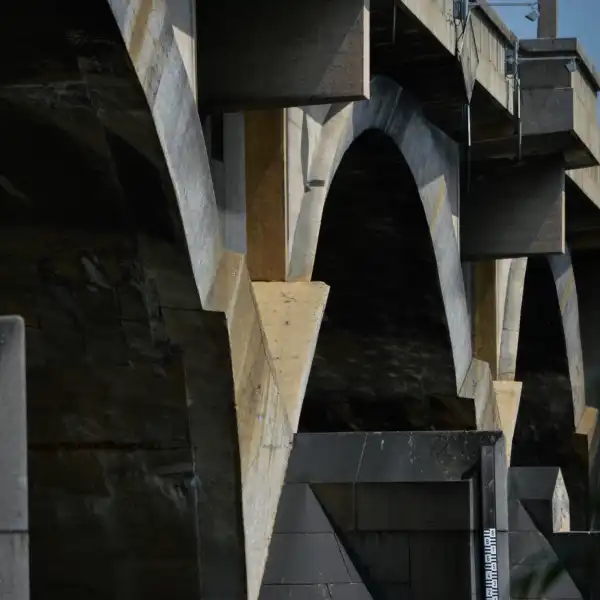
Bridge Route
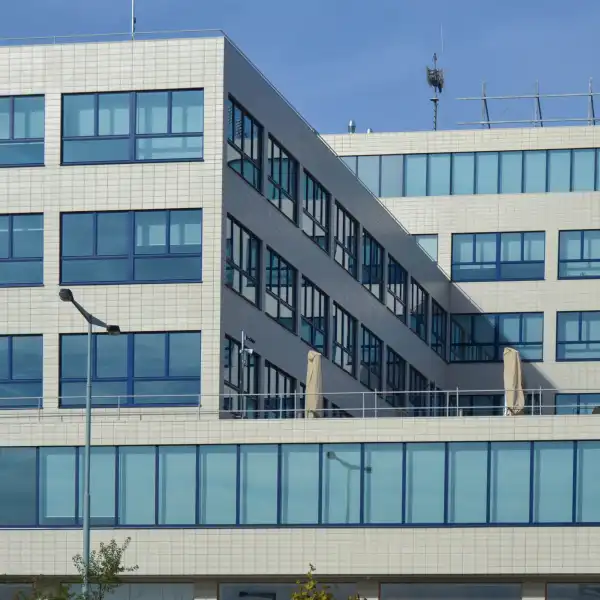
Functionalist Route
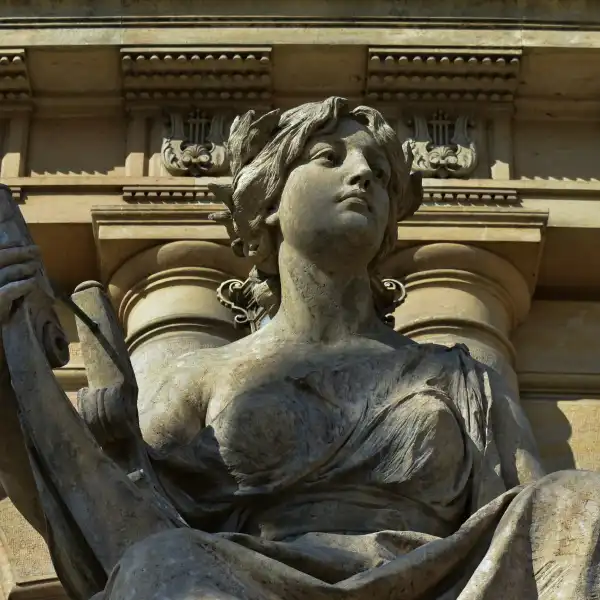
Music Route

Church Route (1930s)

Prager’s Route

Inner Courtyard Route

Glass Route

Empty Route

Literary Route

Brutalist route
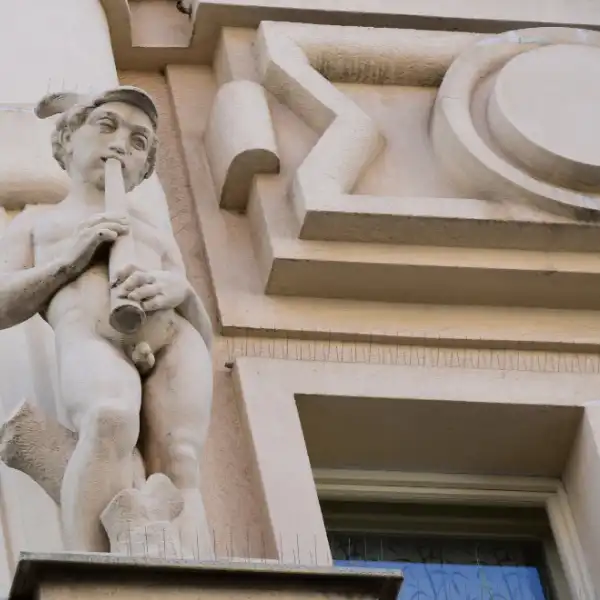
Rondocubist route
